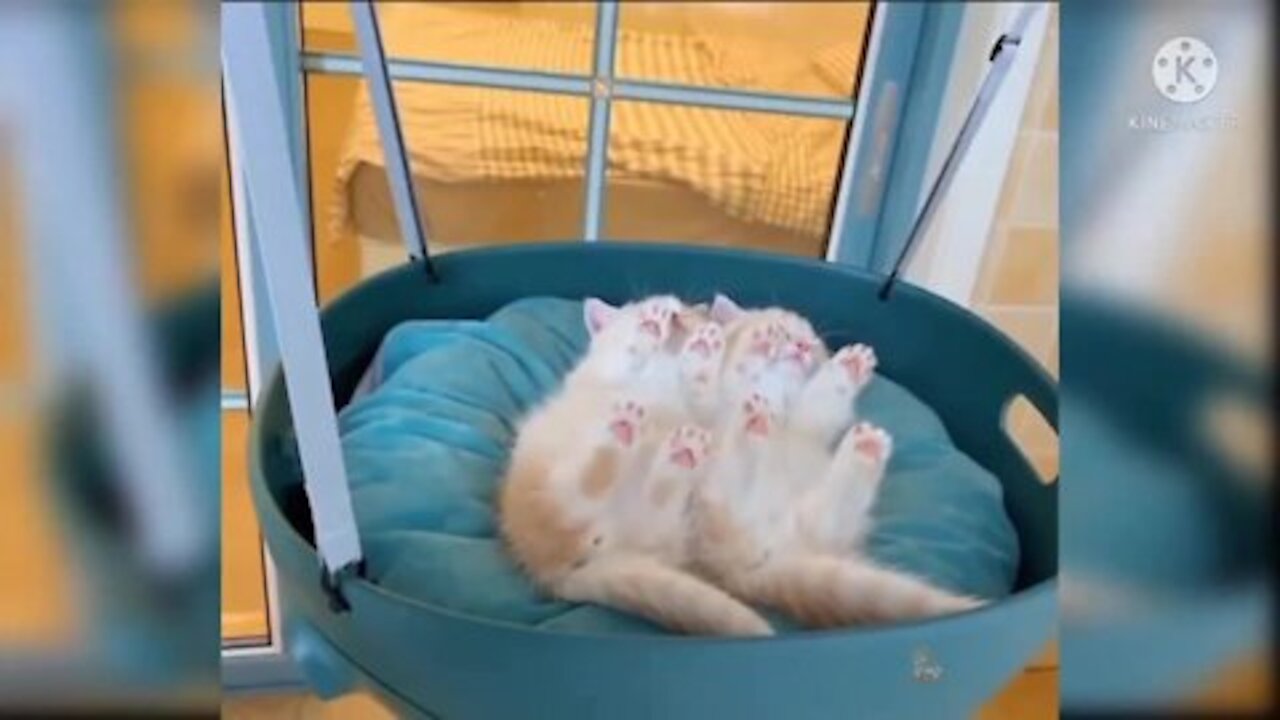Premium Only Content

Baby Cats - Cute and Funny Cat Videos Compilation #266_ Animals.mp4
Baby Cats - Cute and Funny Cat Videos Compilation #266 _ Animals.mp4
The gastrointestinal tract includes the stomach, the small intestine, and the large intestine (colon). This system digests food into useful nutrients, absorbs water, and eliminates waste. Digestive problems often show up as vomiting or diarrhea, which can have many causes, including viral infections; worms; stress; or ingestion of bones, string, hair, or other foreign material.
The urinary system eliminates wastes from protein breakdown and helps control fluid levels. Waste products are filtered by the kidneys and then sent through the ureters to the urinary bladder for storage. Urine is passed out of the body through the urethra. In males, the urethra doubles as a channel for sperm during copulation. The feline penis is small and “hidden” within the scrotal pouch that holds the testicles. This can sometimes make it difficult for pet owners to determine whether their cat is male or female.
Urinary infections usually show up as frequent dribbles of urine that may be tinged with blood. Cats commonly develop a condition called feline lower urinary tract disease, which is also called feline urologic syndrome. Signs can be similar to signs of infection. Feline lower urinary tract disease is caused by a buildup of crystals in the urine, which develop into a sludge that irritates the urinary tract. This is particularly dangerous in male cats, because their urethra, which carries urine from the bladder out of the body, is narrow and bends and turns. If the tract becomes blocked and the cat is unable to pass urine, kidney failure and death can ultimately result without prompt treatment.
Both urinary and digestive problems are often associated with straining while urinating or defecating. At first glance, it may be difficult for cat owners to tell the source of the problem. Therefore, it is important to watch your cat while it eliminates and to check the litter for the character and color of the urine and feces. Diarrhea usually consists of frequent, soft or runny feces that may be a different color (often yellow, gray, or black) than usual. Any sign of blood in the feces calls for veterinary attention. Repeated, unproductive attempts to pass a bowel movement can be a sign of serious constipation or obstruction. Male cats that strain, dribble blood, howl, or have a painful abdomen are likely to have feline lower urinary tract disease. Blockage of either the urinary or gastrointestinal tract is an emergency, and your pet should be seen by a veterinarian immediately.
-
 DVR
DVR
vivafrei
3 hours agoBernie Gets DESTROYED! Confirmation Hearings RECAP! D.C. Aviation Disaster & MORE!
22.1K47 -
 1:34:42
1:34:42
The Quartering
4 hours agoNew Crash Footage PROVES Whose At Fault, Air Traffic Control Exposed, RFK Blasted, AI Issues
68.3K31 -
 4:56:18
4:56:18
Right Side Broadcasting Network
1 day agoLIVE REPLAY: WH Press Secretary Holds Press Briefing 1/31/25
209K79 -
 LIVE
LIVE
Dr Disrespect
5 hours ago🔴LIVE - DR DISRESPECT - PUBG - WHAT WINNING LOOKS LIKE
4,406 watching -
 LIVE
LIVE
Twins Pod
15 hours agoThe Q Anon Shaman EXPOSES The Truth of J6! | Twins Pod - Episode 50 - The Q Shaman
3,125 watching -
 1:02:51
1:02:51
PMG
18 hours ago $0.21 earnedRFK, Immigration & DeepSeek
3.46K1 -
 LIVE
LIVE
Scammer Payback
2 hours agoCalling Scammers Live
369 watching -
 1:33:14
1:33:14
Simply Bitcoin
4 hours ago $2.31 earnedMicroStrategy PROVES You're Not BULLISH Enough On Bitcoin| EP 1172
61.2K4 -
 1:58:05
1:58:05
The Charlie Kirk Show
4 hours agoGetting Them All Confirmed + DEI in the Air | Smith, Means | 1.31.2025
120K35 -
 13:19
13:19
Misha Petrov
3 hours agoDISGUSTING! TikTok Leftists MOCK RFK Jr.’s Disorder While He EXPOSES Big Pharma
24.5K30